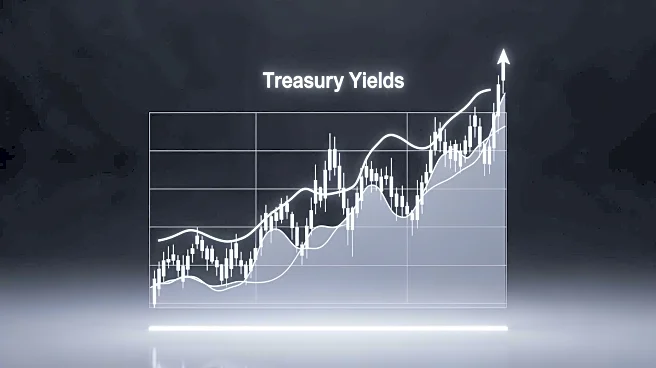What's Happening?
The Federal Reserve is anticipated to cut interest rates at its upcoming meeting, following a cooler-than-expected Consumer Price Index (CPI) report. The CPI data indicated a slower pace of inflation, with the core consumer price index increasing by 0.2%
from August and 3% on an annual basis. This development has reinforced expectations for a rate cut, as the Federal Reserve aims to manage economic risks and support the labor market. The report comes amid a government shutdown that has limited the availability of economic data, making the CPI figures particularly significant for policymakers. The S&P 500 has responded positively, reaching record highs as investors anticipate further monetary easing.
Why It's Important?
The anticipated rate cut by the Federal Reserve is significant for several reasons. It reflects the central bank's strategy to stimulate economic growth amid concerns about inflation and a cooling labor market. Lower interest rates can lead to increased borrowing and spending, potentially boosting corporate earnings and stock market performance. However, the decision also highlights ongoing economic uncertainties, including the impact of tariffs and trade tensions. Stakeholders such as businesses and investors stand to benefit from the rate cuts, as they may lead to more favorable borrowing conditions and sustained market growth. Conversely, persistent inflation and labor market challenges could pose risks to economic stability.
What's Next?
The Federal Reserve is expected to proceed with a rate cut at its next meeting, with the possibility of additional cuts in December. Policymakers will likely continue to monitor inflation and labor market data closely, adjusting their approach as necessary. Market participants will be watching for further guidance from the Federal Reserve, as well as any developments in trade negotiations and government policy that could influence economic conditions. The central bank's actions will be crucial in shaping economic trends and investor sentiment in the coming months.
Beyond the Headlines
The Federal Reserve's decision to cut rates amid a government shutdown and limited economic data underscores the challenges of navigating monetary policy in uncertain times. The move highlights the delicate balance between supporting economic growth and managing inflationary pressures. Additionally, the rate cuts may have long-term implications for financial markets, potentially influencing investment strategies and asset valuations. As the Federal Reserve continues to adapt its policy approach, the broader economic landscape will be shaped by its efforts to maintain stability and foster growth.














